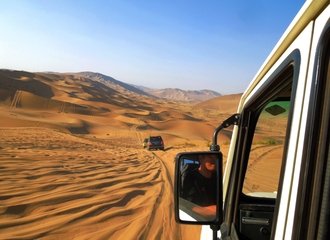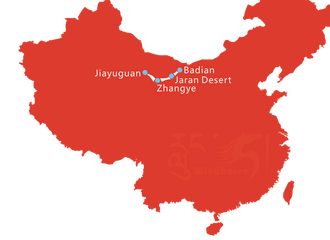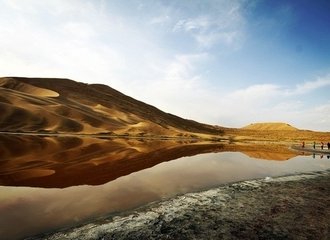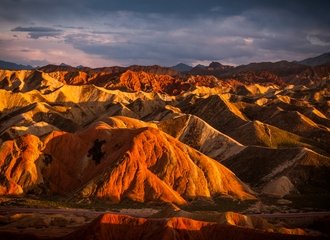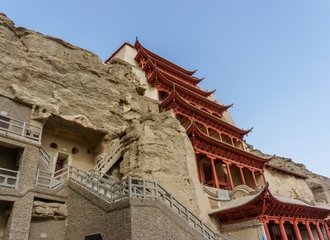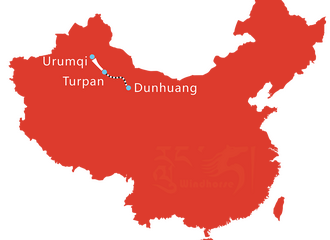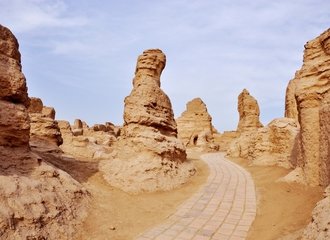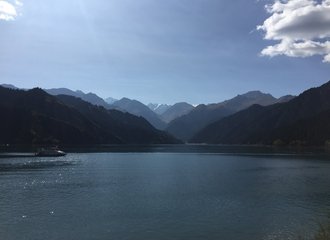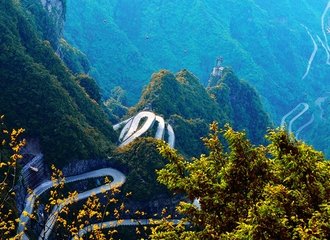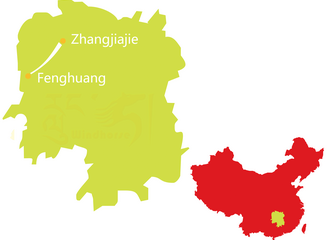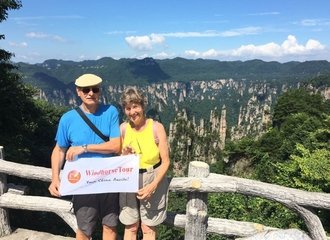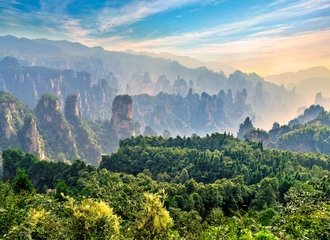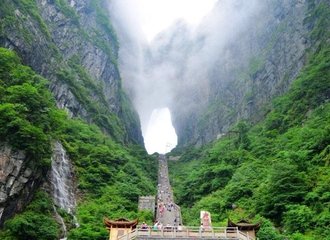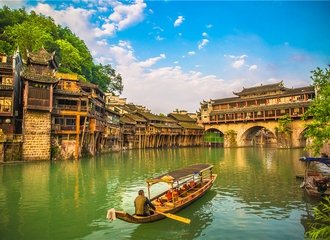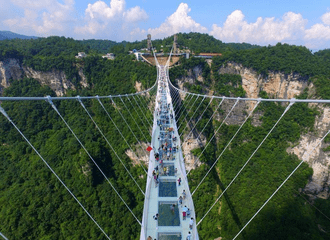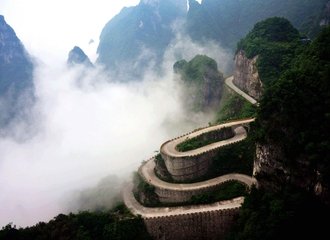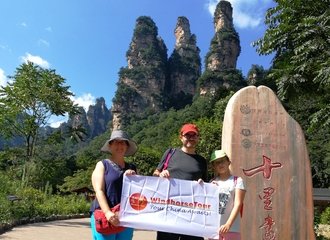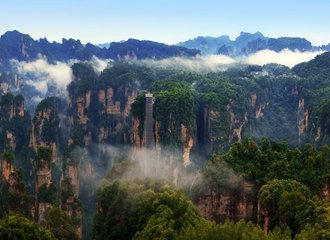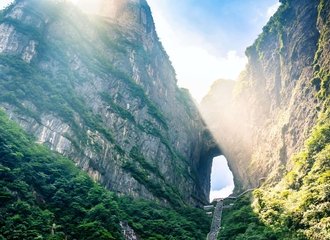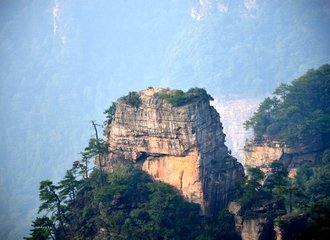A Travel Guide on How to Travel the Silk Road
The Silk Road was once regarded as the longest road in the world. In fact, it's not precisely one road, but a combination of different trade routes that became central to the overall economic, religious, and cultural interactions between the West and the East.
Primarily, the Silk Road is a series of land routes that run throughout Central Asia as well as Southeast Asia, and connect with Southern Europe, all the way to East Africa and the Arabian Peninsula.
The name is derived from the excessive silk trade that was once carried through these routes, beginning in the early years of the Han Dynasty as far back as 207 BCE. These roads and routes have carried centuries of history with them.
By the 18th century, more efficient routes and roads had been constructed, which meant people no longer had to rely on these long and winding routes. However, they remained in use sporadically, and today, the Silk Road has become a significant part of the history of Central Asia.
The portion that runs through China has also been designated as a UNESCO World Heritage Site. If you are traveling to China, you should take a tour of the Silk Road. Many private tours will take you to the various sections and corridors of the Silk Road.
Some of these tours start from Xi'an, some from Urumqi, and some from Turpan. Since most people travel to one of these cities on their tour to China, you can easily book a trip to the Silk Road along the way.
In this travel guide, we shall cover almost everything that you need to know about taking a tour of the Silk Road. From the best times to travel to the best things to try and places that you are going to see, this guide will cover everything that you should know before embarking down this literal trip through the annals of history.
Table of Contents:
- Short about Silk road history
- When is the best time to travel the Silk Road
- Don’t forget your necessary travel documents in China
- Packing is an essential thing before Traveling to Silk Road
- Silk Road routes
- What to visit on your Silk Road journey in China
- Food and Drink during your silk road Trip
- Shopping on the Silk Road
- Accommodation on Silk Road
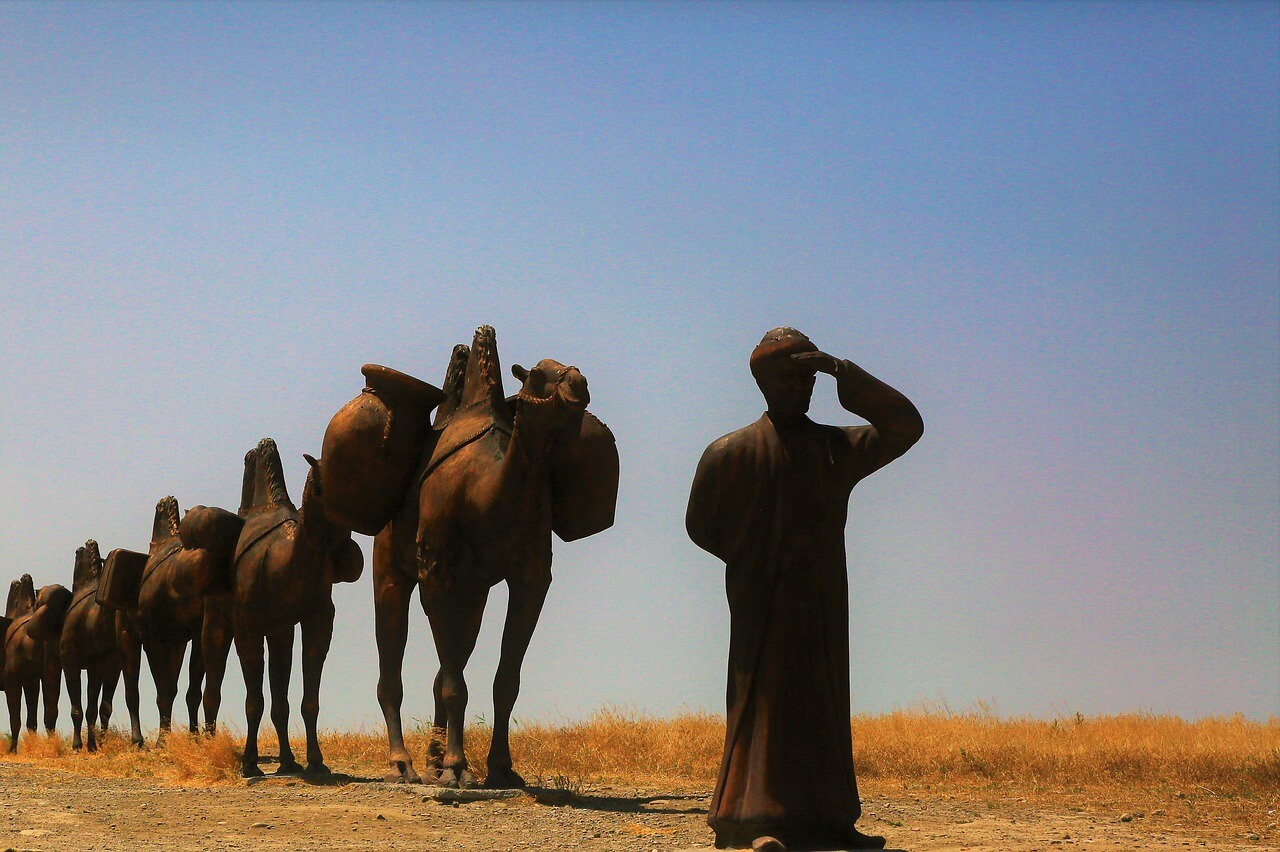

Silk Road history
The Silk Road originated in China, fueled by the need for Chinese exploration and their many conquests. The formal opening of the road for trade was during the time of the Han Dynasty, but you should know that goods had been transported along these roads for many years before.
In fact, it was Darius I, the Persian ruler at the time of the Achaemenid Empire, who created the Royal Road, which established a connection between Susa (now Iran) and Sardis (now Turkey), covering a distance of almost 1,600 km.
This was almost 300 years before the Silk Road actually opened up. Alexander the Great, the man who ruled Macedonia, expanded his kingdom into Persia through the Royal Road. Ultimately, many parts of the Royal Road were included within the Silk Road.
It's funny then that despite its long and winding history, the name "Silk Road" hadn't been coined up until 1877. Ferdinand von Richthofen was the first to call it the "Silk Road," and ultimately, the name was adopted.
Now, most historians prefer to call it "Silk Routes," so as you travel to these winding routes, you might hear one or two people use this instead. It is also important to note that silk wasn't the only popular good amongst the tradesmen walking these routes.
They would trade in almost anything that you can think of, including religious objects, livestock, grain, vegetables, hides, and leather goods, tools, metals and precious stones, and many other items. Perhaps most importantly, it was the trade of religious beliefs, philosophy, science, culture, and language, which contributed significantly to the growth of this region.
The Chinese invented paperback in the 3rd century B.C., and its popularity and use grew across the Silk Road. Eventually, it was through the Silk Road that paper made its way to Europe, and ultimately to Sicily and Spain, thus sparking an industrial revolution.
The famous Venetian explorer Marco Polo also used the Silk Road to travel from China to Italy. They traveled by camel and visited Kublai Khan, the Mongolian Emperor, at Xanadu. In total, Marco Polo spent 24 years in Asia, before finally returning to Venice. The "Travels of Marco Polo" is based on his journey throughout the Silk Road.
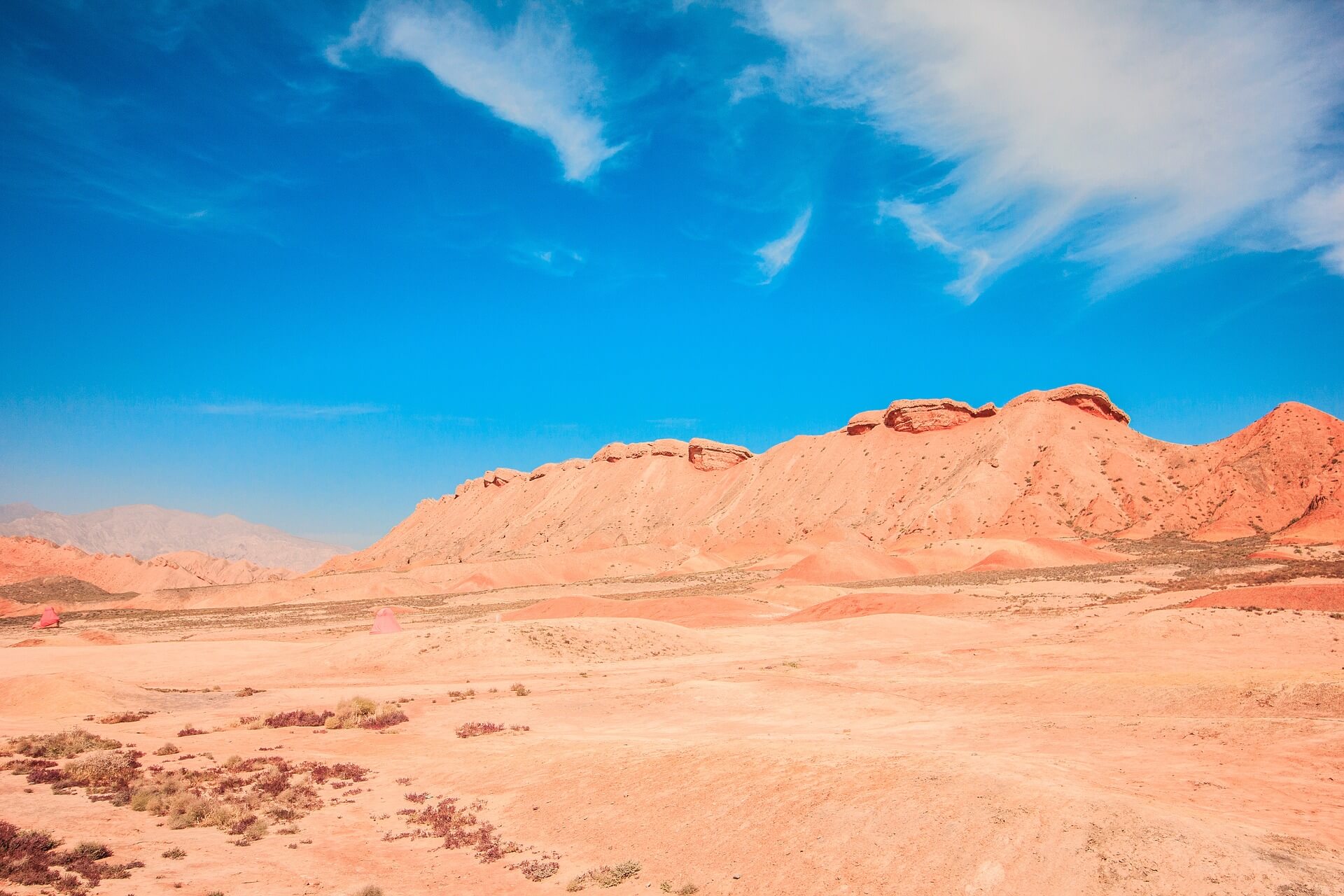

When is the best time to travel the Silk Road
The best time to travel the Silk Road in China first depends on which routes you'll choose to go. In general, the best periods for traveling on Silk Road are spring and autumn, and the best months are May and October. Avoid traveling in summer, because this period of the year can be very unpleasant because of the high temperatures.
Best time to visit Xi'an
Spring can be an enjoyable period to visit Xi'an, especially in April and May. Summer is also an excellent time for visiting this ancient city. The average temperature in summer is between 20°C / 68.0°F and 30°C / 86.0°F.
If you decide to travel in autumn, then September can be the best month to visit Xi'an.
Best time to visit Dunhuang
Springs in Dunhuang are with sharp temperature swings, and summers are short and with very high temperatures. In autumn, temperatures are dropping very fast, and winters are cold and long.
So, the best time to visit Dunhuang is from May to October.
Best time to visit Turpan
Turpan is the warmest city in the country, with very little rainfall and very high temperatures. Even though the summer is sweltering, it is the best season to visit Turpan. From mid-April to July and August or September is the best time for visiting Turpan.
Best time to visit Urumqi
Urumqi has a pleasant climate, especially in autumn, when the temperatures are a little lower in the evening and warm during the day. Also, the period from May to October can be the best time to visit Urumqi.

Don’t forget your necessary travel documents in China
This goes without saying, but you must take along all of the necessary documents that you need to take along with you. You must take essentials like your passport, Chinese visa, tickets, and any other documents that you might need depending on your route.
Let’s begin with the most important document- Chinese visa.
To apply for Chinese visa you must have valid passport with at least six months of remaining validity and blank visa pages. You can apply for Chinese visa directly in Chinese Embassy or Consulate General in your area. You’ll need to apply for an L visa (tourist visa).
If you attend to book a Silk road tour with a travel agency, then you don't need to buy any enter tickets, your agent will do it on your behalf.
If you choose a Silk Road tour that includes visiting Tibet, then you must have Tibet Travel Permit to enter Tibet. The good news is that you don’t need to apply for this document. Your travel agent will get it for you. The only thing that you’ll need to have is a valid passport and a Chinese visa.
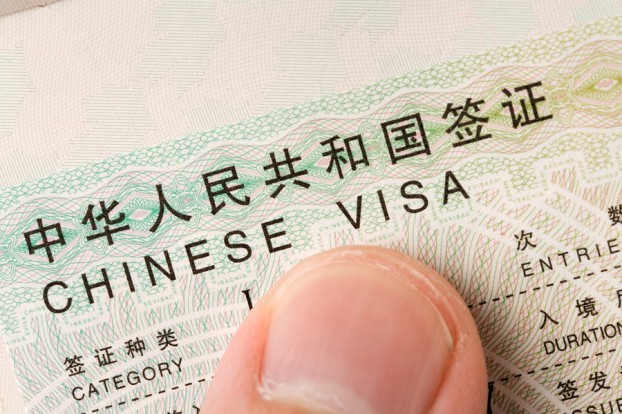

Packing is an essential thing before Traveling to Silk Road
Packing the right things is also essential. Remember, you will be moving quite a lot on your journey, so you need to make sure that you pack as light as possible. Do not try to over-pack, as you will find it difficult to lug all of those heavy suitcases with you wherever you go.
Only take your essentials along with you, and try to limit yourself to just one suitcase. This will make it easy for you to move around without having to worry about all the baggage.
No matter which tour route you choose, you will need to pack light and comfortable shoes.
What kind of clothes you’ll need to pack depends on which Silk road tour route you will choose and also depends on the period of your trip. However, if you choose to travel between May and October you will need to pack a variety of clothes. Consider to pack light shirts and pants, but also warm clothes.
On this trip you will need to have a lot of lotions and moisturizers, and also a sunscreen with a high protection factor. Do not forget to pack lip balm also with sun protection.
An essential thing to pack on this trip is medical supplies.
If you have prescribed medication you’ll need to take it with you. Also, pack a basic first aid kit.
In your bag you will need to have medication for cold, headache, ibuprofen is also essential.
Hygiene items are also essential, take the items that you are packing on every other trip.
Do not forget your personal item, such as a charger, smart phone, ipad or ipod, book, and also pack spare batteries for the camera.
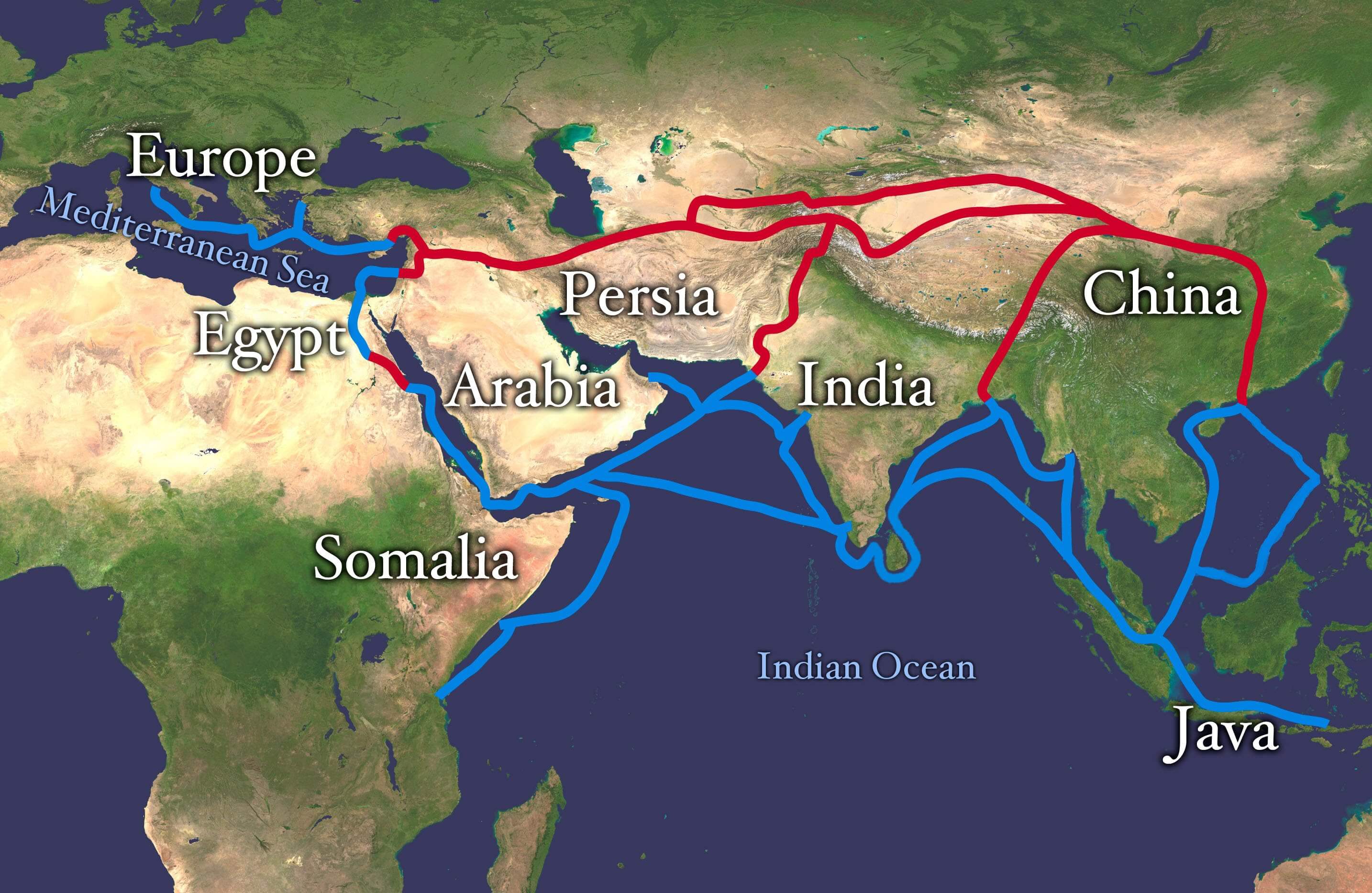

Silk Road Routes
We know that the Silk Road isn't just a road; it is a network of roads that connect eastern China with the far West in Europe.
In ancient times the Silk Road route started in Chang'an, today is known as Xi'an and continued northwest through the Xinjiang province, there was a network road that led to Pakistan, Kyrgyzstan, Uzbekistan, Iran, and Syria. Some routes go to India and then continue by boats to Turkey. However, most of the routes were continental and went to Rome, crossing Turkey and many countries in Europe.
Today's Silk Road routes are for developing tourism, and there are so many choices for the tourists to pick.
Depending on what you want to visit on your Silk Road tour, there are so many different routes for you to choose from.
If you want to explore in-depth the Silk road, you should consider the route that starts in Beijing, and then continue to Kashgar and Turpan, Dunhuang, Jiayuguan, Xiahe, Tongren, then Xining and Xi'an. This travel route will show you all the beauty that Silk road has to offer, starting from Beijing and exploring the city for a few days, and then going on a real adventure visiting the other places.
The other Silk Road route starts in Xi'an, where you can visit the Terracotta Army and Wild Goose Pagoda, then continue to Tianshui, Zangye, Jiayuguan, then Dunhuang, Turpan, and the route ends in Urumqi.
In the following, you can read about what to visit on your Silk road tour, and then it will be easy to decide which tour route to choose.

What to visit on your Silk Road journey in China
Going on an adventure such as the Silk Road tour is inspiring by itself. No matter which travel route you choose to go on, you will have an amazing time during the trip. Every city, every place that you will visit during the tour, will leave you speechless, because of the great history that every area has to tell, but also because of the kind hospitality of the local people that you will meet.
These are some of the major attractions that are recommended to visit during the Silk Road tour.

Kashgar
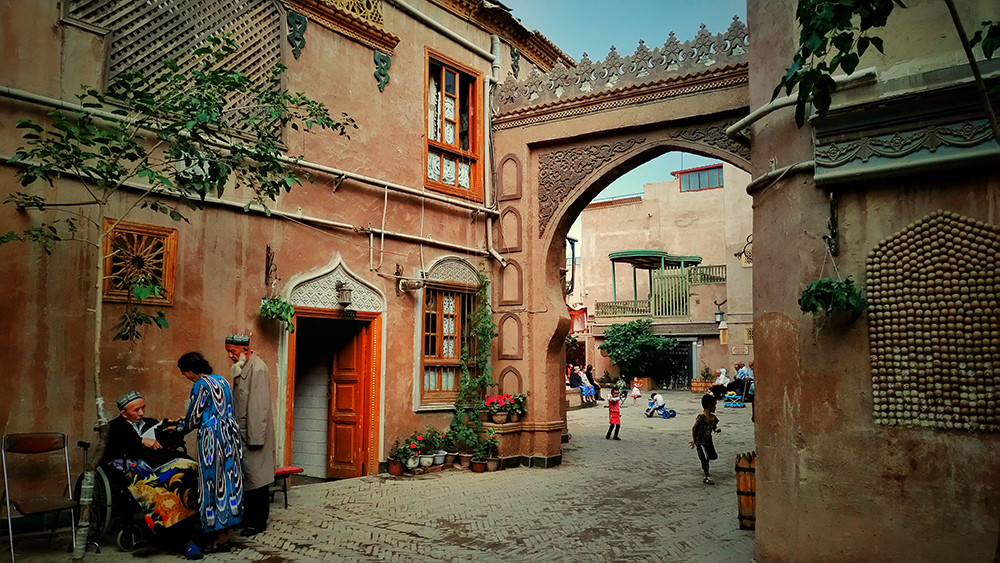
Kashgar is located in the southwestern margin of Xinjiang Province and is the westernmost border city of China. It is near borders with Afghanistan, Kyrgyzstan, Tajikistan, India, and Pakistan.
If you choose a route in Xinjiang Uyghur Autonomous Region, then you must visit Kashgar and its historical attractions.
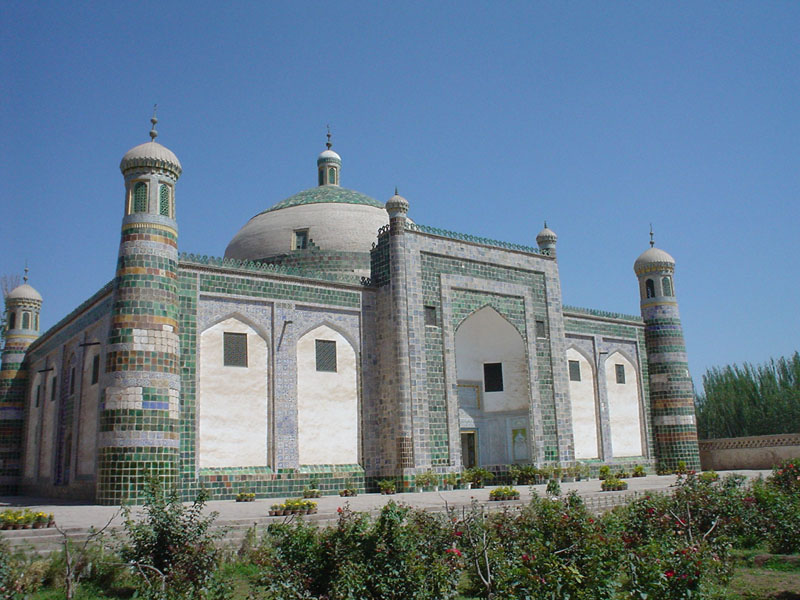
Abakh Khoja Tomb
Abakh Khoja Tomb is also known as Xiangfei Tomb. It is located in Haohan Village, only 5 kilometers east of Kashgar city, and is a key cultural relics protection unit in the autonomous region. This is a typical Islamic ancient building complex and the tomb of the saints of Islam, which covers an area of 2 hectares. It is said that 72 people from five generations of the same family are buried in the tomb.
Xiangfei's tomb is a magnificent palace, and it is 40 meters high, consisting of 5 parts: the gate tower, the small worship temple, the big worship temple, the teaching hall, and the main tomb.
On the dome-shaped dome, there is an exquisite and transparent tower. At the top of the tower, there is another gold-plated crescent moon with gleaming gold and solemnity. In the tall and spacious hall of the mausoleum, a platform of half-person height was built, followed by 58 tombs of 72 people in the fifth generation of the Xiangfei family.
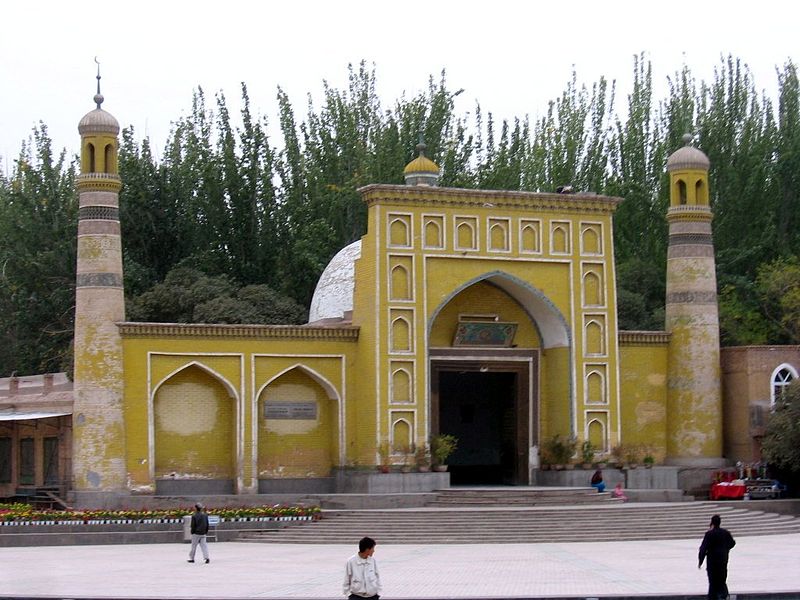
Id Kah Mosque
If your Silk Road tour leads you to Kashgar, you must visit one of the largest mosques in China- Id Kah Mosque. It was built in 1442, and with that long history, the mosque is worth visiting. It is 140 meters long from north to south and 120 meters wide from East to West. It covers a total area of 16,800 square meters and is divided into "the main hall" and "outside", The temple, the "Teaching Hall", the "yard", the "Arch Baizi", the "Xuanli Tower" and the "gate".
The popularity of this mosque tells us the number of visits every day. Approximately 2000 to 3000 people visit Id Kah Mosque every day, and that number is even higher (around 40000) when there are Muslim festivals.

Zhangye Rainbow Mountains
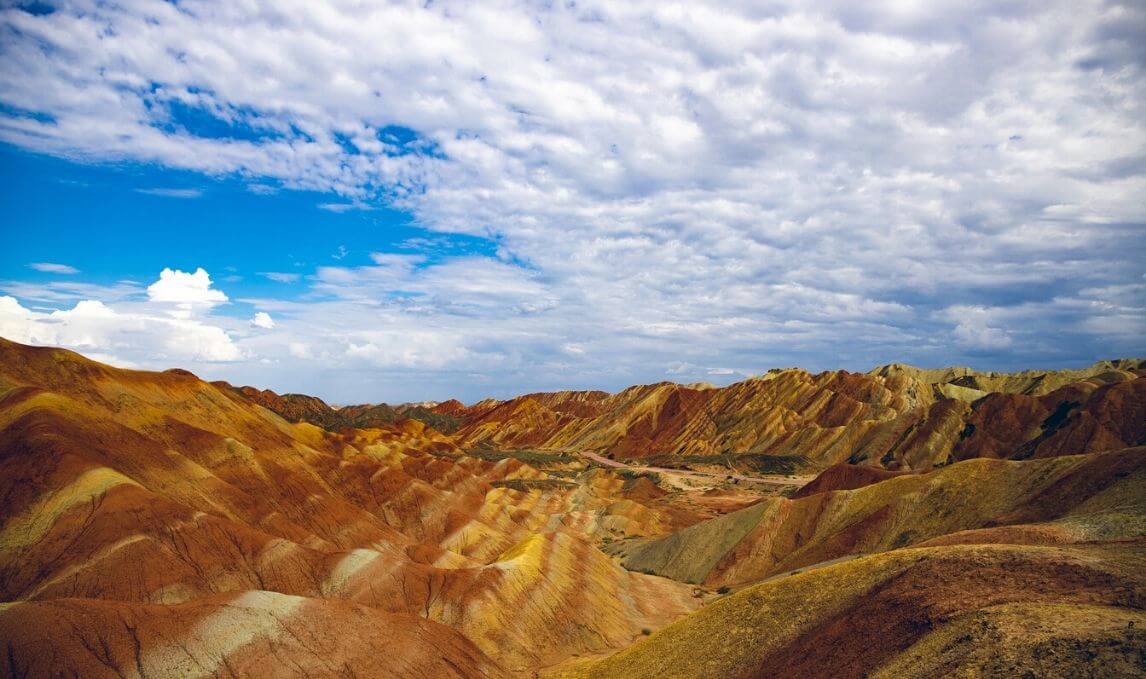
Zhangye Danxia Geopark or also known as Rainbow Mountains is located in the northern foothills of the Qilian Mountains, 30 kilometers south of Linze County, Zhangye City, Gansu Province. It is the region with the largest and best landform development and the richest landform in Danxia, China. The typical representative of the palace-like Danxia in the form of a mullion has high scientific research and tourist appreciation value.
To have the best view of the colorful hills, you should visit at sunrise or sunset. And there are several viewpoints. The first is the largest platform, and it is near to the entrance. You will need about 10 minutes to walk from the entrance to the platform.
The second viewpoint is the highest, and you will have a panoramic view from there. To look over the famous "'Seven-Color Fan" mountains, you will need to go on the third view platform.
And for the most stunning view over this magnificent mountain, you should go on the fourth platform.

Turpan
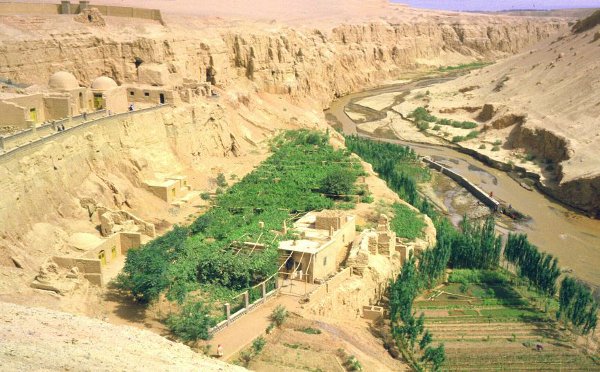
Turpan was a significant city for the ancient Silk Road, and today, it is a popular travel destination on the Silk Road. It is located in the middle of the Xinjiang Uygur Autonomous Region and on the southern foot of Bogda Peak and in the center of the Turpan Depression.
There are several attractions that you can visit near Turpan, but these are the most popular attractions.
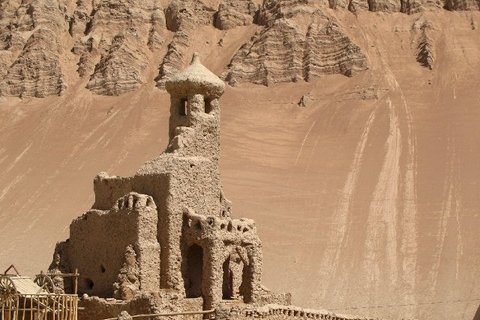
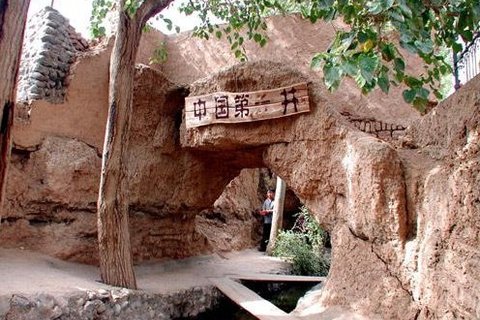
Karez Well
During your visit to Turpan, we recommend visiting Karez Well- one of the three major construction projects in ancient China. The other two are the Great Wall and the Grand Canal.
It is a unique irrigation system that is still used by local people for drinking water and for watering the corps.
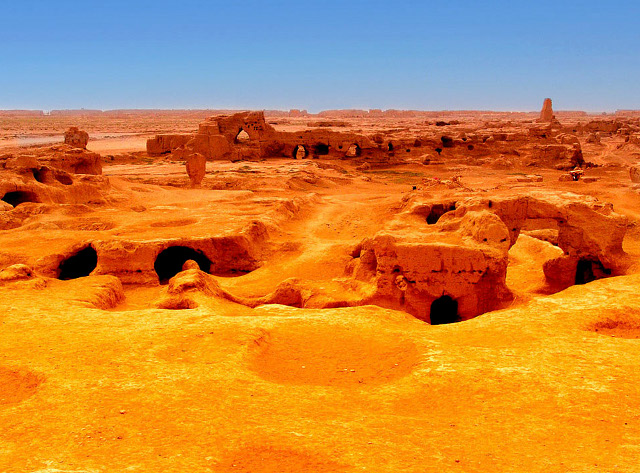
Gaochang Ruins
Gaochang Ruins, also known as Gaochang Ancient City, is located 40 kilometers east from Turpan, and it covers an area of over 2,000,000 square meters. The wind and the long history have ruined the structures that were part of the city, but there is enough evidence to remind us of the importance of this city in the time of the ancient Silk Road.
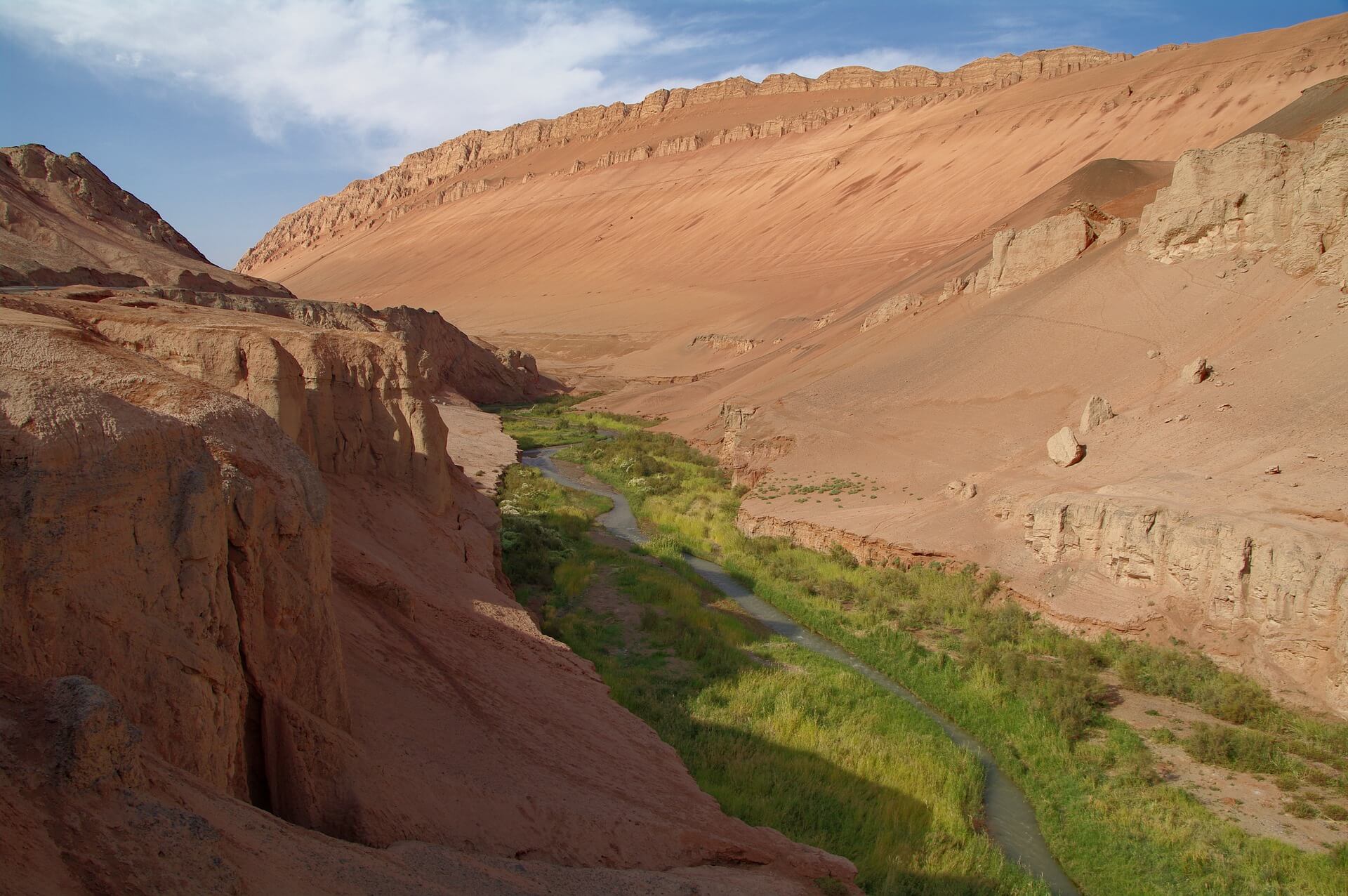
Flaming Mountains
The Flaming Mountains, also known to many as the Gaochang Mountains, can be found on the northern rim of the Taklamakan Desert. They are located east of Turpan and stretch for an area of 100 kilometers. The average height is around 500 m, and the mountain climate usually remains harsh throughout the year. The Subashi Formation, as well as the Lianmuqin Formation, are both found here.

Crescent Springs
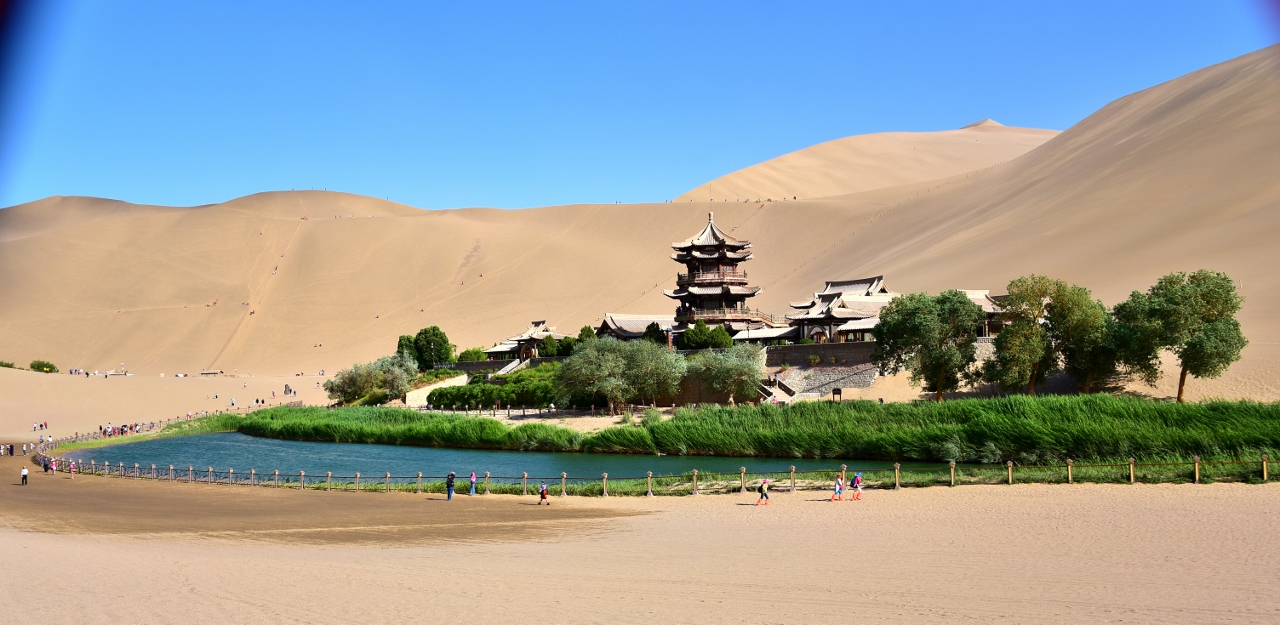
Crescent Springs is located 6 km south of Dunhuang in Gansu Province, and are named because of their unique, crescent-like appearance. The average depth of the springs is around 4 to 5 meters, and the surrounding area is also quite popular with the tourists. ATV rides and camel rides are often offered. Keep in mind, however, that the springs and the lake are both receding over time.

Mogao Caves
The Thousand Buddha Grottoes, also known as the Mogao Caves, is a system of 500 temples that run southeast from the Dunhuang Center. Here, you will find some of the most beautiful examples of Buddhist art, and these caves are thousands of years old, giving you an insight into life in olden China. In fact, the first caves were dug out in 366 AD, and are one of the three famous Buddhist architectural sites in the country.

Jiayuguan Pass
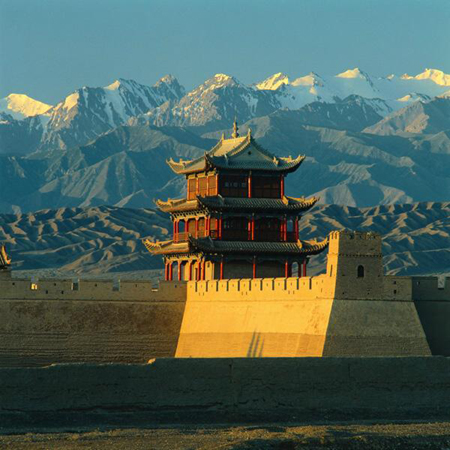
The Jiayu Pass is the first fortress located on the Ming Dynasty Great Wall, near the city of Jiayuguan. It is one of the three main passes of the Wall itself, along with Shanghai and Juyong. It is shaped like a trapezoid and has a perimeter of 733 meters. It is incredibly significant in current Chinese culture and is a popular destination for tourists, mainly because it's the most intact and well maintained ancient military structure.

Xi'an
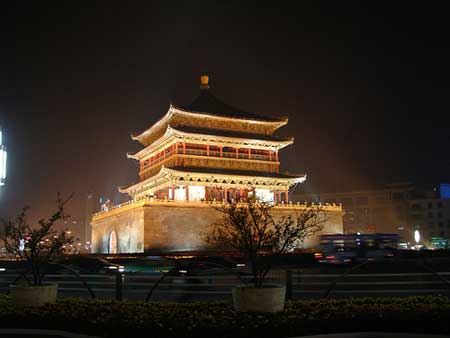
The city of Xian is also the capital of the province of Shaanxi. It is one of the oldest cities in the country and was one of the Four Great Ancient Capitals. Xian is home to many gorgeous places that you should visit, including the Giant Wild Goose Pagoda and the famed Bell Tower.
However, most people usually visit the city to check out the famous Terracotta Army that was discovered in the 1970s. To get a better idea about the history of the place, you should also check out the Shaanxi History Museum.
Terracotta Army
One of the most popular attractions in China, the Terracotta Army, is an army of terracotta soldiers discovered by archeologists in the 1970s. There are more than 8,000 soldiers, each with their facial expression, along with separate units for the infantry and the cavalry. It is known as Emperor Qinshihuang's Army, as it was placed in his mausoleum to guard him in the afterlife.

Food and Drink during your silk road Trip
There are plenty of shops along the Silk Road that you can visit. The gastronomic pleasures of the many Silk Road towns attract tourists in thousands from all over the globe.
The Silk Road was responsible for the first mills that appeared in China. As the popularity of the mills began to spread, noodles were soon made available, and the local Han chefs and cooks introduced a wide variety of noodle foods into the mix.
Today, you can still find many of these unique cuisines being offered. For instance, one of the significant Chinese favorites is Mantou; a bread-like bun steamed adequately before being served.
Then, you have polow, which has undergone many iterations. Known to some as pilav or pilao, it forms the basis of one of the most elaborate and unique dishes that you will find in Chinese cuisine. It primarily comprises parboiled rice (sometimes steamed too) and a mix of additional ingredients, including quinces, almonds, walnuts, barberries, pomegranates, and many more.
The dish originated in Iran, but it is also served in many of the smaller Silk Road towns that you will visit. In China, the locals prefer meat and fish and often mix them with water mallow, turnips, yams, and a wide range of other vegetables.
Every night around dusk, you will see street vendors setting up their stalls. Xiao chi (small restaurants) and the ye shi (night markets) are the best places to eat as you travel along the Silk Road.
The most popular food that you will find throughout Northwestern China is barbecued mutton that is served on skewers. It tends to get less spicy as you venture further northwest, and you can eat it with a variety of flatbreads.
When you are in Xinjiang, you can expect most of the meals to contain some form of noodles. Boiled mutton dumplings are also quite famous here, and you can also buy a wide range of fruits along the way, including apricots, grapes, plums, mulberries, peaches, melons, and a lot more. The fruit is sold seasonally, so you can rest assured that whatever you buy will be fresh.

Shopping on the Silk Road
There are plenty of local shopping places throughout the many towns that are located close to the Silk Road. You can buy artifacts and other things like trinkets and jewelry items in Kashgar, Urumqi, Turpan, Dunhuang, Xi'an, and Lanzhou.
When you are in Xian, you should consider visiting the Muslim Quarter, as it is the best shopping area in the city. You can find folk art crafts, cultural items, and of course, try the many famous cuisines that are popular here.
The Wenbaozhai Tour Shopping Center is also worth a visit. You can find silk rugs, carpets, silk clothing, embroidered items, and jewelry here. Historical relics, model clay figures, and various kinds of antiques are sold here too.
Then, you should also try the Shazhou Night Market in Dunhuang. It's a bit smaller, but the people and the vibe of the place are enough to draw you to it. It is one of the many famous trading centers situated across the Silk Road.
While shopping here, you should also try various local foods. Unique items include Chinese medicine, luminous cups, precious metals, and wooden cups.
Finally, you are going to visit Xinjiang. The Xinjiang province is home to several unique cultures and customs, and you will find a lot of individual items, including knives in various shapes, handmade trinkets, and jewelry items.
Xinjiang is famous for its mushrooms and fruits, and you are going to find these in abundance at the markets. There are quite a few bazaars spread all over the province, many of which are run by ethnic groups.

Accommodation on Silk Road
Most of the Silk Road regions are generally remote, but you don't need to worry about finding a comfortable place to stay. As the tourism sector has developed along the Silk Road, a number of hotels have been built along the way to meet the rising demand.
Several international hotel brands like Sheraton and Intercontinental are also present in these regions. In popular areas like Dunhuang, Xian, Lanzhou, Kashgar, Urumqi, or Turpan, you can easily find hotel rooms ranging from economy to luxury.
There are several high-rise hotels in these areas as well. Some places like Urumqi and Kashgar serve as economic centers of major provinces like Xinjiang, which have been developed quickly. In places like Dunhuang, you can even book a 5-star hotel for yourself.

